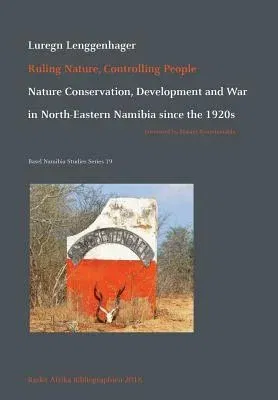Luregn Lenggenhager
(Author)Ruling Nature, Controlling People: Nature Conservation, Development and War in North-Eastern Namibia since the 1920sPaperback, 3 September 2018

Qty
1
Turbo
Ships in 2 - 3 days
In Stock
Free Delivery
Cash on Delivery
15 Days
Free Returns
Secure Checkout
Part of Series
Basel Namibia Studies
Print Length
280 pages
Language
English
Publisher
Basler Afrika Bibliographien
Date Published
3 Sep 2018
ISBN-10
3906927008
ISBN-13
9783906927008
Description
Product Details
Author:
Book Format:
Paperback
Country of Origin:
US
Date Published:
3 September 2018
Dimensions:
24.41 x
16.99 x
1.5 cm
ISBN-10:
3906927008
ISBN-13:
9783906927008
Language:
English
Pages:
280
Publisher:
Series:
Weight:
449.06 gm

